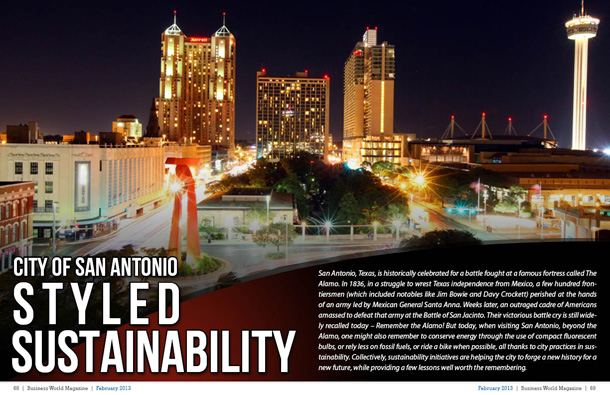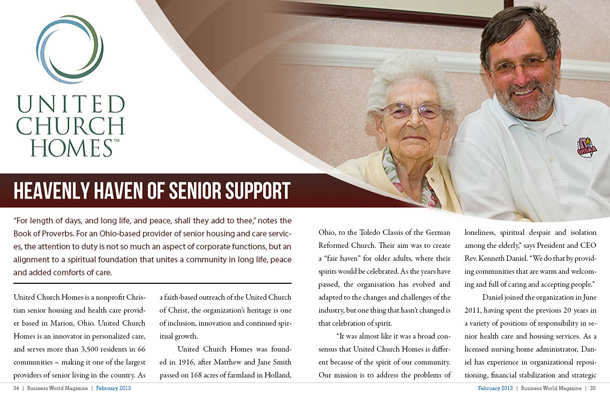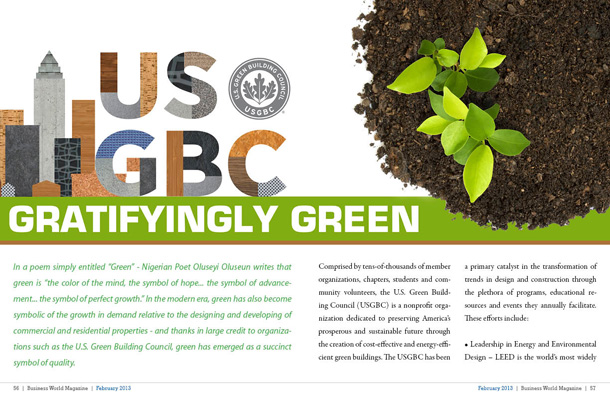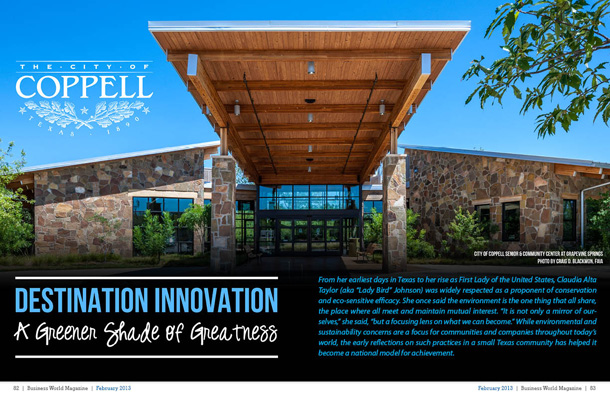
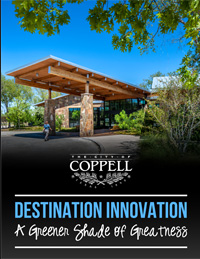
From her earliest days in Texas to her rise as First Lady of the United States, Claudia Alta Taylor (aka “Lady Bird†Johnson) was widely respected as a proponent of conservation and eco-sensitive efficacy. She once said the environment is the one thing that all share, the place where all meet and maintain mutual interest. “It is not only a mirror of ourselves,†she said, “but a focusing lens on what we can become.†While environmental and sustainability concerns are a focus for communities and companies throughout today’s world, the early reflections on such practices in a small Texas community has helped it become a national model for achievement.
The city of Coppell is a Dallas County community in Texas that enjoys several notable and historic distinctions. For one, it is home to the site of Grapevine Springs where the legendary General Sam Houston signed an important 1832 peace accord with a local Indian tribe, an event that occurred more than 20 years before the City of Dallas was even founded. The community is further distinguished for its connection to an early U.S. Senator and former Lt. Governor of Texas, Barnett Gibbs. Out of honor and respect for his service, the community was actually dubbed as “Gibbs†until 1890 when principals elected to change the town name in recognition of George Coppell. A railroad magnate from New York, Coppell was influential in developing what was known as The Cotton Belt Railroad (an extension of the St. Louis and Southwestern Railroad) which was so fundamental to the transport of goods, as well as people, in this area of Texas and beyond. A relatively small and quiet community, Coppell was incorporated in 1955, but development really didn’t begin to take-off until the 1970s with the opening of the Dallas/Fort Worth International Airport. Deemed as “The World’s Largest Airport†at that time, D/FW operations encompassed some 18,000 acres of property with a portion of that penetrating directly into Coppell. Now, with respect to the wide dimension of business, tourism and J.R. Ewing Family-styled fame affiliated with its larger, more densely populated neighboring community, it is safe to say that Coppell’s relevance could have easily been obfuscated in the modern era were it not for the fact that it has achieved other historic acclaim.
Texan Tenacity
A measure of Coppell’s acclaim was recalled during a recent ceremony sponsored by “Keep Texas Beautiful†(KTB), a grassroots organization affiliated with the national Keep America Beautiful program.  KTB is a state, non-profit initiative that educates and advocates social accountability and responsibility in terms of making necessary environmental improvements, right in the respective there, wherever one so happens to live. During the ceremony, which confers the highest of environment-themed honors in Texas, Coppell earned the coveted 2012 Governor’s Community Achievement Award. The award specifically recognized the efforts associated with “Keep Coppell Beautiful†and fulfilling of their local mission to promote education as well as activities that result in waste reduction, litter prevention and increased beautification. Beyond the honor generated, Coppell was also awarded more than $200,000 in funds from the Texas Department of Transportation which will be used for a local highway landscaping project.
And not to negate any significance of their 2012 award, the simple fact remains, this wasn’t the first time Coppell has earned such distinction. Over the last seven years, Coppell has secured more than two-dozen various honors and awards for its environmental and conservation practices. Initiatives, as well as individuals of Coppell, have consistently captured state and national recognition for their environmental efforts. While these activities have been routinely thrust into the spotlight throughout the last decade, Coppell actually started stepping-up to the stage many years earlier. Coppell Community Programs Supervisor Amanda Vanhoozier explains it this way, “We were being ‘green’ before it was even cool to be seen as ‘green’â€.
Today’s Coppell is a byproduct of initiatives that date back more than 20 years, following the designation of the Dallas/Fort Worth Metroplex as a “nonattainment area†in accordance with laws defined by the Clean Air Act of 1970. These are areas where the air quality is determined to be worse than parameters identified in the National Ambient Air Quality Standards. Weather, geographic topography and airport operations probably figured in the nonattainment designation, but that label typically prompts community response to mitigate potential loss of some forms of federal financial assistance. In the case of Coppell, it prompted actions that gradually led to a model for reform as well as an outline of all that can be accomplished when there is a will to act.
As Vanhoozier explains, “It’s been a process… we didn’t necessarily have a vision, but we had citizens with ideas, and a city management and council, that was willing to listen to those ideas… as a smaller community, we were able to be flexible and be very engaged with the citizenry that were driving the ideas which helped make our community what it is today.â€
Those efforts began with a recycling program in the early 90s, followed by education campaigns to inform residents about the benefits of recycling and conversation. Then, in what may be the greatest testament to the community flexibility, City leaders began to examine their own operations. Community Information Officer Sharon Logan explains that the city started analyzing whether it was practicing what it preached, and determined to set the example they would encourage others to follow. “We had to become the example for the adoptions the community has picked-up.â€
Culture change isn’t easy, as Vanhoozier says, “Sometimes, it is easier for an organization to look outside, but not at itself, when it comes to enforcing regulations… and it took time to develop a system that allowed us to better regulate ourselves.â€
What began as a simple recycling campaign blossomed into something greater and grander in scale. The City went on to create an environment that promoted the idea that everyone is accountable, everyone is responsible, and everyone can play a role in making improvements, whether that is offering ideas and suggestions or simply doing the right thing. The City established a “Green Team†comprised of representatives from every department. These members routinely provided suggestions and ideas which went on to take a life of their own.
For example, as City Fleet Manager Mark Brochtrup details, deliberations led to changes in fleet operations. Beyond implementing standards involving practices at fueling stations, Coppell went on to enact what may be the nation’s most stringent “no idling†policies. Other changes led to the purchasing of hybrid vehicles (the first Toyota Prius’ in Dallas County), in fact, Brochtrup says almost 15 percent of the city’s fleet are hybrid today, which includes police cars.
The City went on to improve storm water management systems, adopt use of Energy Star certified appliances, and create educational programs and events that have since become annual community traditions. From Clean Coppell (the city-wide cleanup day) to Coppell Earthfest, initiatives branched out to partnerships with the Coppell Chamber of Commerce and the Coppell Independent School District where additional programs were established.
Working with Coppell schools, an environmental team was established which led to the teaching of new curriculum. Other initiatives involved creation of the Coppell Farmers Market and the very popular Coppell community gardens. Established in 1998, Vanhoozier says she has tracked the development of some 120 community gardens throughout the United States which have all been modeled after the one created by Coppell.
In fact, the extent of programs, events, policies implemented throughout Coppell are too numerous to list. The focus on eco-friendly and sustainable penetrates into every practice of the City, including the negotiation of contracts with vendors. As Vanhoozier says, “We are so far into this, it’s a way of life now… we have filters, this is the way we think, this is the way we operate.â€
A good example of that includes the designing and building of The City of Coppell’s Senior Recreation and Community Center at Grapevine Springs. Relying on the design and planning expertise of a firm known as Pro Forma Architecture, The Center earned distinction as a LEED Silver Certified construction. With its rustic complement of stone and wood, Pro Forma’s Jeff Bulla III, AIA, says the Center not only complies with numerous standards of sustainability, but beautifully looks at home in Coppell.
But all combined, the environmental focus in operations have not only helped the city and its resident save money and save energy, it has also contributed to Coppell’s presence in numerous books, journals and studies, as well as at the forefront of thought from communities around the world who often turn to the city for advice and insight into practices they might also adopt.
Mayor Karen Hunt says at present, Coppell is benefiting from the work of a committee comprised of 125 citizens who developed the “2030 Vision,†a plan that provides strategies to manage future opportunities and challenges, ensuring that the high standard of living today will continue tomorrow.  She says it was good that Coppell determined to adhere to such practices while the community was in the early stages of growth, because it now guides the manner in which Coppell will further mature. She says beyond the cost savings, community involvement and education programs that benefit children and adults, Coppell benefits also from the exposure it has received for striving to keep both Texas, and America, beautiful.
“We are known as a community of choice,†says Mayor Hunt. “If people choose to live here because the way our city looks and the way we act, we want to them to participate too.â€


